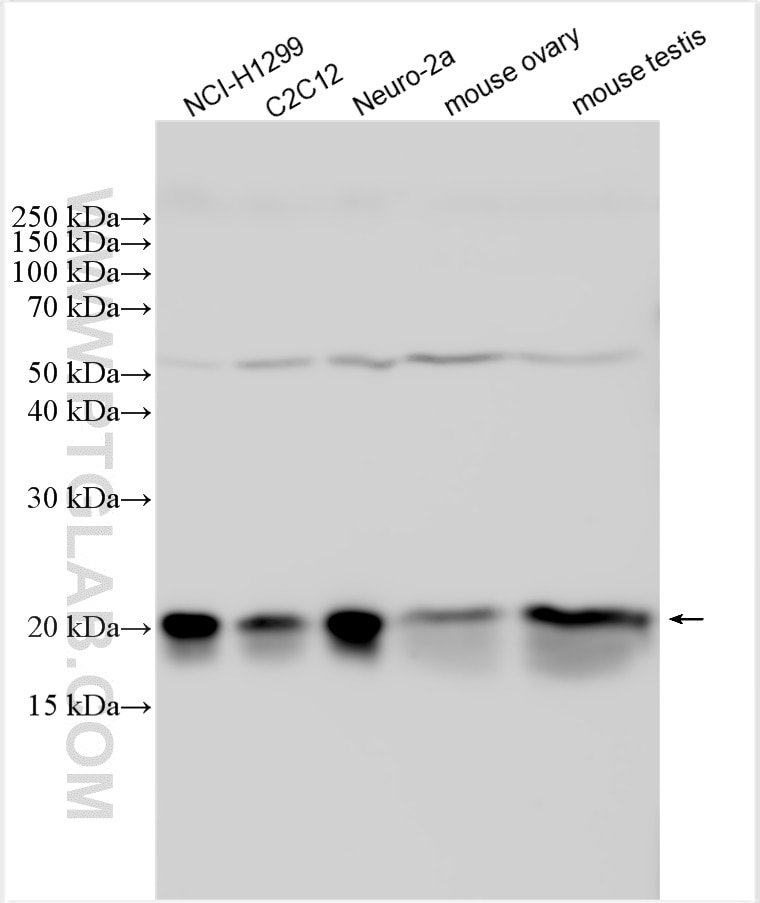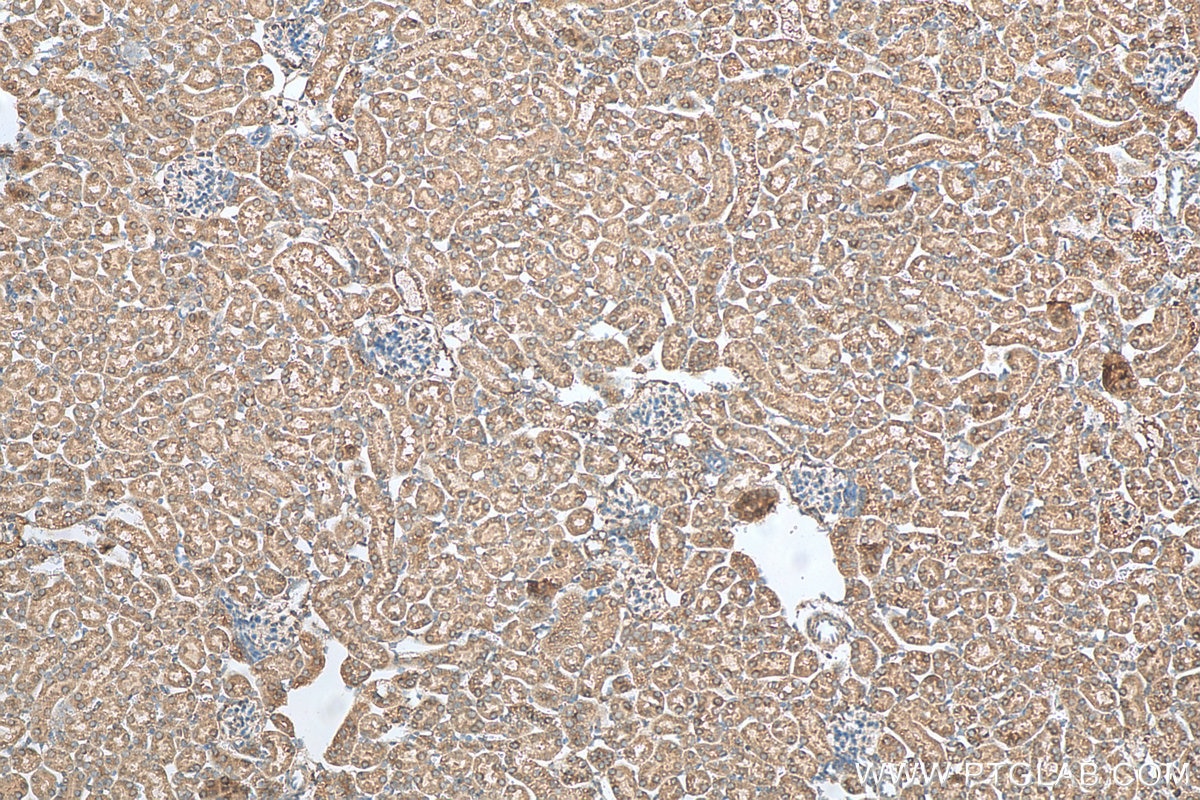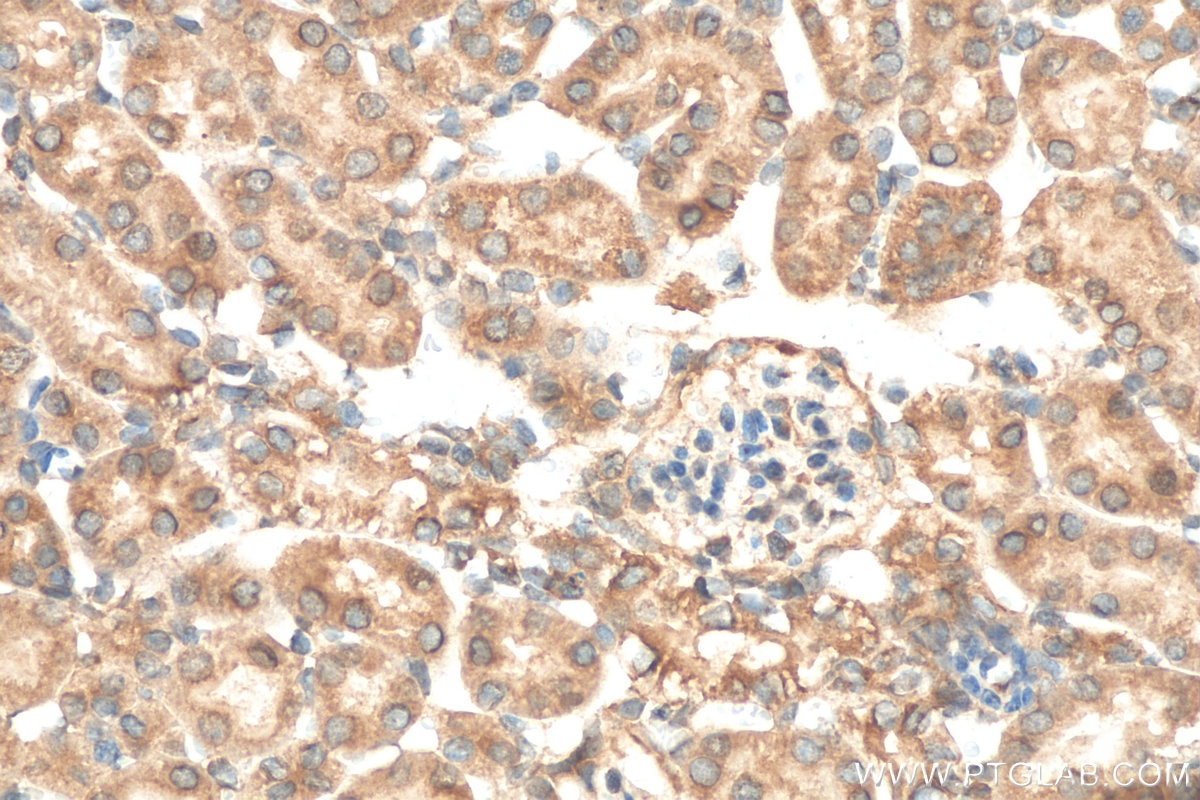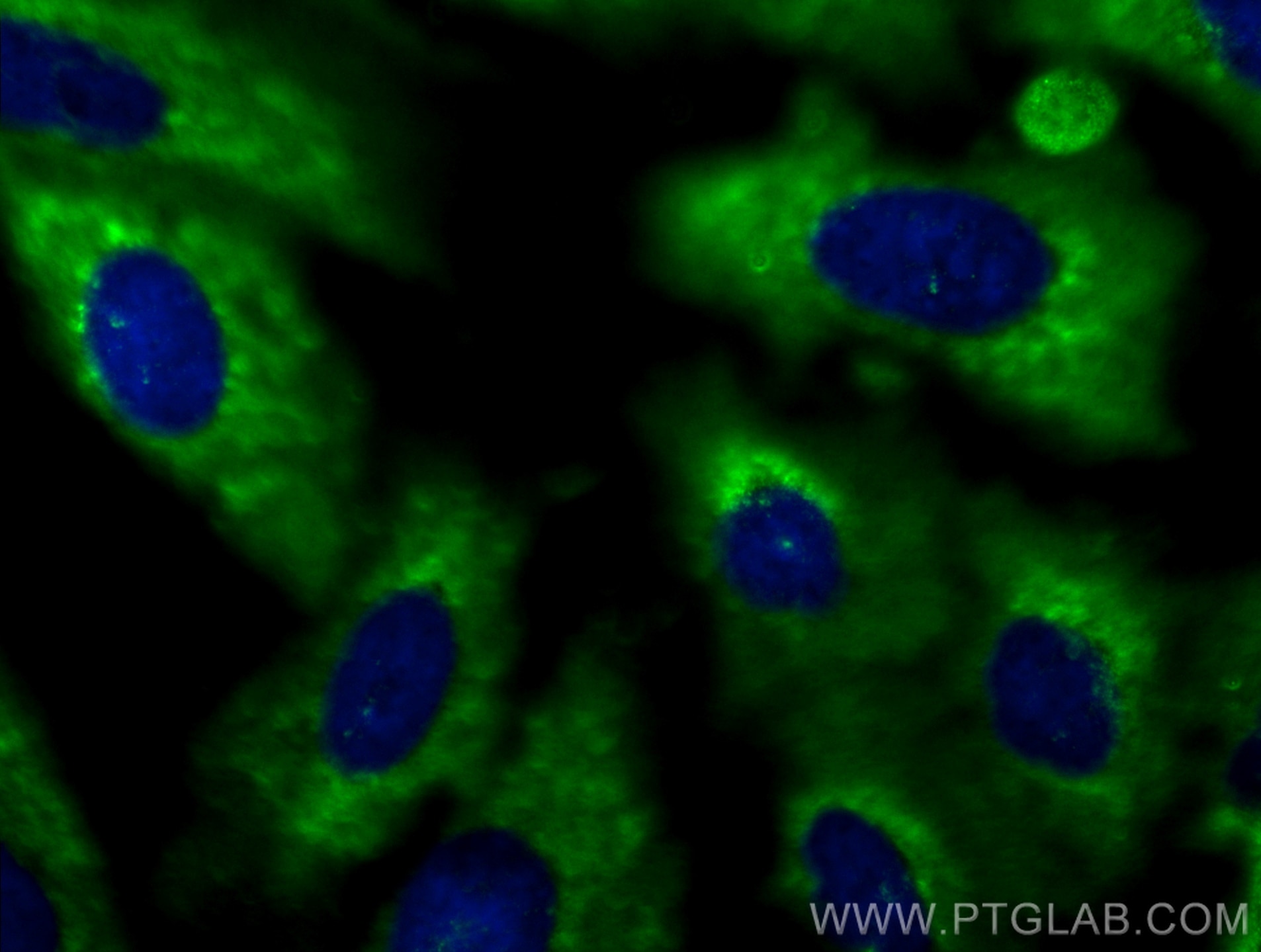Tested Applications
| Positive WB detected in | NCI-H1299 cells, C2C12 cells, Neuro-2a cells, mouse ovary tissue, mouse testis tissue |
| Positive IHC detected in | mouse kidney tissue Note: suggested antigen retrieval with TE buffer pH 9.0; (*) Alternatively, antigen retrieval may be performed with citrate buffer pH 6.0 |
| Positive IF/ICC detected in | A549 cells |
Recommended dilution
| Application | Dilution |
|---|---|
| Western Blot (WB) | WB : 1:2000-1:6000 |
| Immunohistochemistry (IHC) | IHC : 1:50-1:500 |
| Immunofluorescence (IF)/ICC | IF/ICC : 1:200-1:800 |
| It is recommended that this reagent should be titrated in each testing system to obtain optimal results. | |
| Sample-dependent, Check data in validation data gallery. | |
Published Applications
| WB | See 1 publications below |
Product Information
15811-1-AP targets Centrin 3 in WB, IHC, IF/ICC, ELISA applications and shows reactivity with human, mouse samples.
| Tested Reactivity | human, mouse |
| Cited Reactivity | human |
| Host / Isotype | Rabbit / IgG |
| Class | Polyclonal |
| Type | Antibody |
| Immunogen |
CatNo: Ag8547 Product name: Recombinant human CETN3 protein Source: e coli.-derived, PGEX-4T Tag: GST Domain: 1-167 aa of BC005383 Sequence: MSLALRSELVVDKTKRKKRRELSEEQKQEIKDAFELFDTDKDEAIDYHELKVAMRALGFDVKKADVLKILKDYDREATGKITFEDFNEVVTDWILERDPHEEILKAFKLFDDDDSGKISLRNLRRVARELGENMSDEELRAMIEEFDKDGDGEINQEEFIAIMTGDI Predict reactive species |
| Full Name | centrin, EF-hand protein, 3 (CDC31 homolog, yeast) |
| Calculated Molecular Weight | 167 aa, 20 kDa |
| Observed Molecular Weight | 23 kDa |
| GenBank Accession Number | BC005383 |
| Gene Symbol | Centrin 3 |
| Gene ID (NCBI) | 1070 |
| RRID | AB_2082361 |
| Conjugate | Unconjugated |
| Form | Liquid |
| Purification Method | Antigen affinity purification |
| UNIPROT ID | O15182 |
| Storage Buffer | PBS with 0.02% sodium azide and 50% glycerol, pH 7.3. |
| Storage Conditions | Store at -20°C. Stable for one year after shipment. Aliquoting is unnecessary for -20oC storage. 20ul sizes contain 0.1% BSA. |
Background Information
Centrin 3 protein is a highly conserved calcium-binding protein that belongs to the EF-hand calcium-binding protein superfamily and contains four calcium-binding domains. It is primarily located in structures associated with the microtubule-organizing center within cells. Centrin 3 plays a crucial role in centriole duplication, which is essential for the bipolarity of cell division. Additionally, Centrin 3 is involved in inhibiting the activity of the centrosomal Mps1 kinase and has an antagonistic relationship with the function of Centrin 2. Recent studies have shown that CETN3 interacts with USP49 to participate in RNA splicing processes in neural stem/progenitor cells, thereby indirectly affecting the cell cycle and neural development.
Protocols
| Product Specific Protocols | |
|---|---|
| IF protocol for Centrin 3 antibody 15811-1-AP | Download protocol |
| IHC protocol for Centrin 3 antibody 15811-1-AP | Download protocol |
| WB protocol for Centrin 3 antibody 15811-1-AP | Download protocol |
| Standard Protocols | |
|---|---|
| Click here to view our Standard Protocols |










